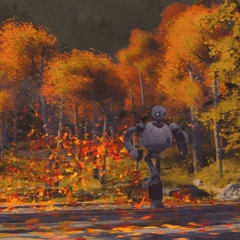In recent years, artificial intelligence (AI) has emerged as a powerful tool for tackling some of the most pressing global challenges, particularly in the realm of environmental conservation. AI’s ability to analyze large datasets, predict trends, and optimize processes makes it a vital asset in preserving and protecting our planet. Let’s explore how AI is transforming environmental conservation and why it’s crucial for sustainable future development.
How AI Helps Monitor and Preserve Ecosystems
One of the primary uses of AI in environmental conservation is in monitoring ecosystems. Traditional methods of tracking biodiversity and ecosystem health are time-consuming and resource-intensive. AI, however, can rapidly analyze data from sensors, satellites, and drones, allowing for real-time monitoring of habitats. This is particularly valuable in remote areas where human presence is limited. AI systems can identify patterns, detect changes in ecosystems, and even predict potential risks to wildlife populations.
AI and Climate Change: Mitigating Risks and Predicting Trends
AI is also playing a crucial role in climate change research. By processing massive amounts of environmental data, AI can help scientists understand climate trends and predict future scenarios. Machine learning algorithms can analyze temperature fluctuations, carbon emissions, and weather patterns to forecast long-term climate changes. These insights enable governments and organizations to implement better policies and create more effective climate action strategies.
Moreover, AI-driven models are used to simulate the effects of climate interventions, providing valuable data for making informed decisions on carbon reduction methods and sustainability efforts. This predictive power allows for more proactive approaches to mitigating climate change, rather than reactive ones.
AI-Powered Solutions for Waste Management and Recycling
Waste management is another area where AI is making a significant impact. AI technologies are being employed to optimize waste collection and recycling processes, reducing pollution and conserving resources. For example, AI-powered robots and sensors can automatically sort and segregate waste, increasing recycling efficiency and minimizing landfill waste.
Additionally, AI algorithms are used to track waste generation patterns and help cities and businesses implement smarter waste reduction strategies. Through AI, waste management systems can be fine-tuned to prioritize recycling efforts and reduce the environmental impact of waste disposal.
AI in Renewable Energy Optimization
Renewable energy sources like solar and wind are crucial for reducing our reliance on fossil fuels, but their efficiency can be unpredictable. AI is revolutionizing the renewable energy sector by optimizing energy production and distribution. AI algorithms can predict energy demand and adjust the output of renewable energy systems to match that demand, ensuring more efficient use of resources.
Furthermore, AI is used in smart grids to manage energy flow between producers and consumers. These intelligent systems balance energy supply and demand, minimize waste, and contribute to the overall sustainability of energy networks.
AI for Forest and Wildlife Conservation
Forests and wildlife face numerous threats, from deforestation to poaching. AI has emerged as a powerful tool in the fight against these threats. By analyzing satellite imagery and drone footage, AI can detect illegal logging activities, track wildlife movements, and assess the health of forests in real-time.
Machine learning models are also used to predict and prevent wildlife poaching by analyzing patterns in human activity and identifying areas of high risk. These technologies support conservation efforts by providing real-time data and actionable insights to wildlife protection teams.
Collaboration and Future Prospects of AI in Environmental Conservation
As AI continues to advance, collaboration between tech companies, governments, and environmental organizations will be essential to harness its full potential. The integration of AI with other technologies, such as blockchain and IoT (Internet of Things), will enable even more precise monitoring and management of natural resources.
Looking ahead, the future of AI in environmental conservation is bright. AI will continue to improve the accuracy of predictions, streamline sustainability efforts, and optimize the management of natural resources. In the coming years, we can expect AI to play an even more significant role in preserving our planet for future generations.
Conclusion
AI is revolutionizing the way we approach environmental conservation. From monitoring ecosystems and mitigating climate change to optimizing waste management and renewable energy production, AI is providing innovative solutions to some of the most pressing environmental challenges. By embracing AI and fostering collaboration, we can ensure a sustainable future and protect our planet for generations to come.


Recommended Comments